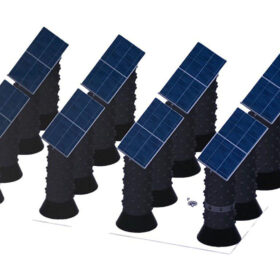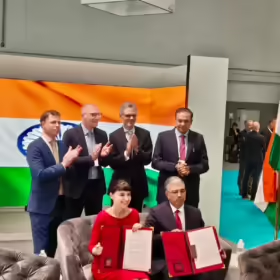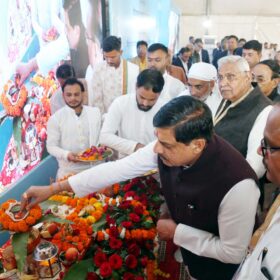Unlocking the potential of radiative cooling for photovoltaic modules
Radiative cooling is an emerging technology that holds the potential to enhance the performance and longevity of PV modules. Researchers from the Institute of Nanotechnology of Lyon explain how this technology may reach commercial maturity.
All solar cell efficiencies at a glance – updated
The research group led by Professor Martin Green has published Version 65 of the solar cell efficiency tables. There are 17 new results reported in the new version.
Perovskite-silicon tandem solar cell based on indium oxide buffer layer achieves 30.04% efficiency
Researchers in China have fabricated a perovskite-silicon tandem solar cell that utilizes an indium oxide sputtering buffer layer to protect the perovskite absorber and the electron transport layer from potential damages arising from the electrode deposition process. The new layer not only ensured this protection but also showed strong optical and electrical properties.
Colombian researchers design agrivoltaic system with hydroponic towers
Colombian researchers have designed an agrivoltaic system integrating hydroponic growing towers. The modular array, consisting of stackable 20 cm rings, creates a structure up to 2.5 meters tall, optimized for cultivating approximately 80 plants per square meter.
Wood Mackenzie forecasts 77 GW of floating solar globally by 2033
Wood Mackenzie predicts that the global floating solar market will be dominated by the Asia-Pacific (APAC) region and led by India, China and Indonesia through to 2033. The consultancy says growth will be driven by rising demand, decreased capital expenditure and supportive policies.
The Hydrogen Stream: SECI, H2Global to collaborate on green hydrogen initiatives
The collaboration will focus on enhancing knowledge exchange on market-based mechanisms and fostering cooperation between India and renewable hydrogen importing countries.
Lithuania bans remote Chinese access to solar, wind, storage devices
Lithuania has decided to tighten its cybersecurity laws, banning manufacturers from countries deemed national security threats, including China, from remotely accessing management systems of solar, wind, and storage facilities. The European Solar Manufacturing Council has backed the move.
Looming Trump tariffs drive rush on US imports, push shipping costs higher
Freight costs are rising as businesses rush to import goods ahead of higher tariffs promised by US President-elect Donald Trump on Chinese and European products.
Longi unveils heterojunction BC solar cells with 27.3% efficiency
The Chinese manufacturer said the device is based on dense passivating contacts that reduce parasitic light absorption and improve passivation. It used a streamlined manufacturing technique that is reportedly about one-third more effective than TOPCon mainstream technology.
China cuts export tax rebate for solar products
China has reduced the export tax rebate for solar products, lowering refunded taxes for Chinese PV exporters and eating into their profit margins. The move might force some companies to increase export prices to mitigate potential financial losses.















